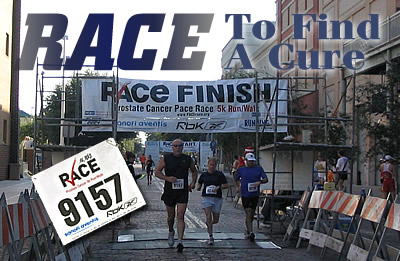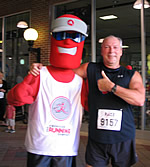![]()
November 13 , 2005 | Vol. 2 Issue 9
E-mail cocoahigh65.com with comments or news
 |
Archive of past issues, hurricane news, funky links, odds and ends — not quite a site map, but enough to navigate your way around.
Bob Mayo’s CHS site contains links to other CHS-related sites, along with plenty of individual information.
July 20, 1969
How time flies. July 20th, 2004 - the day after our official launch - was the 35th anniversary of 1969’s Apollo 11 and astronaut Neil Armstrong’s first walk on the moon! We were with friends in Gainesville, gathered around a b&w portable t.v., listening to Walter Cronkite broadcast the event on CBS.
Our playgrounds were beaches, rivers, and orange groves. Going to the Big City meant a run over to Orlando’s Steak ’n Shake or Ronnie’s, on Colonial. Remember Florida before air conditioning? Or how it felt waiting for the bus when the mosquito control spray planes fogged the whole county? Say, wasn’t that...DDT?
For us, the rockets red glare and bombs bursting in air most likely meant another launch that went haywire, ending up with someone hitting the destruct button and another million bucks of rocket up in smoke. The eyes of the world were on us — and life was great.
©MMV/cocoahigh65.com

photos by Sue Siebenthaler
|
(Tampa, FL) Saturday I entered my first official 5K run, although in my case the run part is figurative, rather then literal. (Note: the “WALK” qualifier is partially obscured in the start/finish banner, above.)
There’s a certain irony at work here. Fifteen years ago I shot an assignment in the Bahamas for Runner’s World magazine. I was still smoking then, and at the time thought running was something you did only if you couldn’t buy gas for the car.
The event was one of a series of races produced throughout the country by the Prostate Cancer Education Council to improve public awareness of the disease, current detection methodology, and treatment protocols.
My interest is personal, as a result of having been biopsied (if you’re facing this procedure, make sure your doctor explains what’s going to occur — mine didn’t, and boy howdy was I surprised at the implement used and its purpose) five years ago, and vicarious, via Bobby Fuhrel’s survival of his prostatectomy several years ago.
Men are 1/3 more likely to contract prostate cancer than women are to develop breast cancer. (Personally, I tend to not pay much attention to the various stats regarding this particular gland's tendency to develop cancer. It’s pretty well documented that if a guy lives long enough, the prostate will become cancerous.) Today, the cure rate is pretty good, and that’s predicated on early detection. Which gets us back to the race.
I picked up my registration in Ybor City 45 minutes before the race, a little leary of running on pavement. My entire previous 5K experiences have been on the beach, at the annual Indian Rocks Beach Gulfside Gallop, more of an excuse to have a little early morning fun than an official running exercise, and never in what you could call a crowd.
Beach running offers plenty of built-in excuses for not performing well; the tide swamped my shoes (true), the sand’s too soft, red tide, the shells hurt my feet, “Hey, look — dolphins!”, etc. Street running, well, there’s no hiding out. The goody bag (a nifty mini-backpack) had a bunch of cool stuff inside, including a sponsor t-shirt in addition to the event tee, SPF 30 sunscreen, pamphlets, and a talking pedometer (sample: “HURRY UP!”, “THIS AIN’T NAP TIME”, and, “WHAT’S TAKING SO LONG?”)
Plus a bunch of power bar stuff and plenty of info on obtaining free screening tests. All of which added up to a pretty good return for a modest investment in something we all need a little more of, that being exercise and direction. So if any of you guys haven’t yet been screened, you’re running behind and need to get it done. Trust me, women go through a lot more in the course of their routine medical pokes and prods. So see ya’ in the streets — just holler and I’ll move out of the way.
The Battered Coast
Last month we headed west to Baton Rouge, then north to St. Francisville, in part to discover how the region’s recovering two months out from hurricanes Katrina and Rita.
 |
| A friend’s home in New Orlean’s after the water subsided. While many escaped with relatively minor damage, tens of thousands are left homeless, either through total destruction or irreparable damage. |
The sheer tonnage of the debris deposited along the interstate is mind-numbing. Beginning just past Mobile, and continuing (for us) west of Slidell, the disaster was evidenced across three states. For mile after silent mile, this is one of the saddest things I’ve ever witnessed.
Once past Mobile, the interstate drops down to within a few miles of the coast, quickly slipping into the same mostly gray with some green forest wreckage we’ve gotten used to as a result of the storms that have battered the coast since Ivan tore through Pensacola. This time, though, the area affected was far worse.
The roadway, both east and west, was littered solid with the most mundane wreckage imaginable, which only served to underscore what it must have been like for those affected.
Mattresses and bedsprings, aluminum siding, fiberglas home insulation, appliances, ragged sheets of tin roof, plastic dolls, clothing, and overlaying everything were the blown off tire carcasses of semi retreads. Hundreds of them, in both directions.
The eastbound Mississippi welcome station featured 24-inch diameter pines snapped off at the base, while the Beau Rivage series of steel billboards, used in the past to promote entertainment from The Beach Boys to David Copperfield, all lay twisted and bent, battered industrial skeletons stripped of their commercial messages in silent testimony to the storm’s power.
Baton Rouge on the surface is trudging along, although traffic during rush hour is familiar only if your frame of reference is Atlanta or LA. The good news? Around New Orleans, the air quality is much better, due mainly to the fact that the a large percentage of the vehicles that formerly clogged the streets are now rendered unusable, and many of their owners have relocated.
And Baton Rouge itself seems poised to welcome an expansive collection of new restaurants with golden pedigrees, which when matched against the decidedly impressive home town eateries could result in a fresh destination for followers of the best regional cuisine.
Hurricane Tip For Backing Up Paperwork, Forms, Licenses
I’m behind in taking care of all the steps recommended for everyone subject to hurricanes. In one area, though, I’m perhaps out in front. I’ve rented space on Apple’s remote .Mac site for a number of years now, and regularly backup what I’ve determined is critical data to their servers located who knows exactly where.
The membership currently runs $100/annually, and for that you get a basic 1 gig of storage. If you’ve got a Mac, Apple’s own flavor of backup software — Backup — works great, with a number of selection templates already set up. PC people can use the service also, though it’s not quite as seamless.
After watching the plight of Katrina’s refugees struggling to recover crucial documentation, whether for insurance or governmental purposes, I set up a FileMaker database to store scanned documents, including licenses, credit cards, insurance papers, etc.
Each record may contain policy numbers, registration info, a visual image of the front and back of the card, etc., along with toll free contact info. All is backed twice weekly up to Apple’s secure site, which can be accessed from any terminal, anywhere in the world, regardless of whether or not your own computer is under 20 feet of water.
So You Think You Know Florida
The St. Pete Times runs a pretty good series of quizzes that parse who knows what about where we live. They don’t take long, but they’re not as simple as you might think. For instance, you didn’t ever have to live here to know Florida means land of _________, but who can name where Walt first wanted to plop down DisneyWorld? And it wasn’t anywhere in Orange County.
